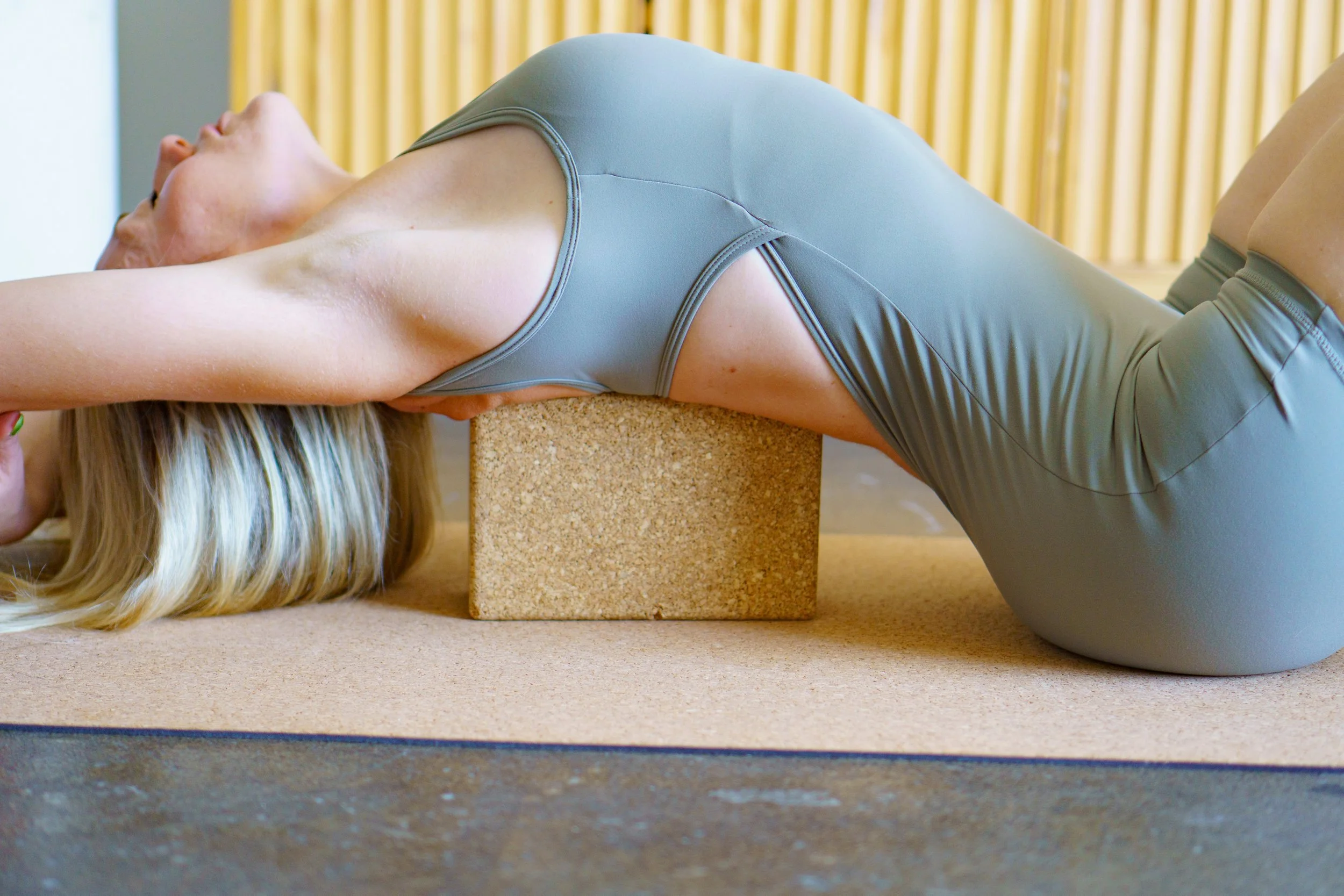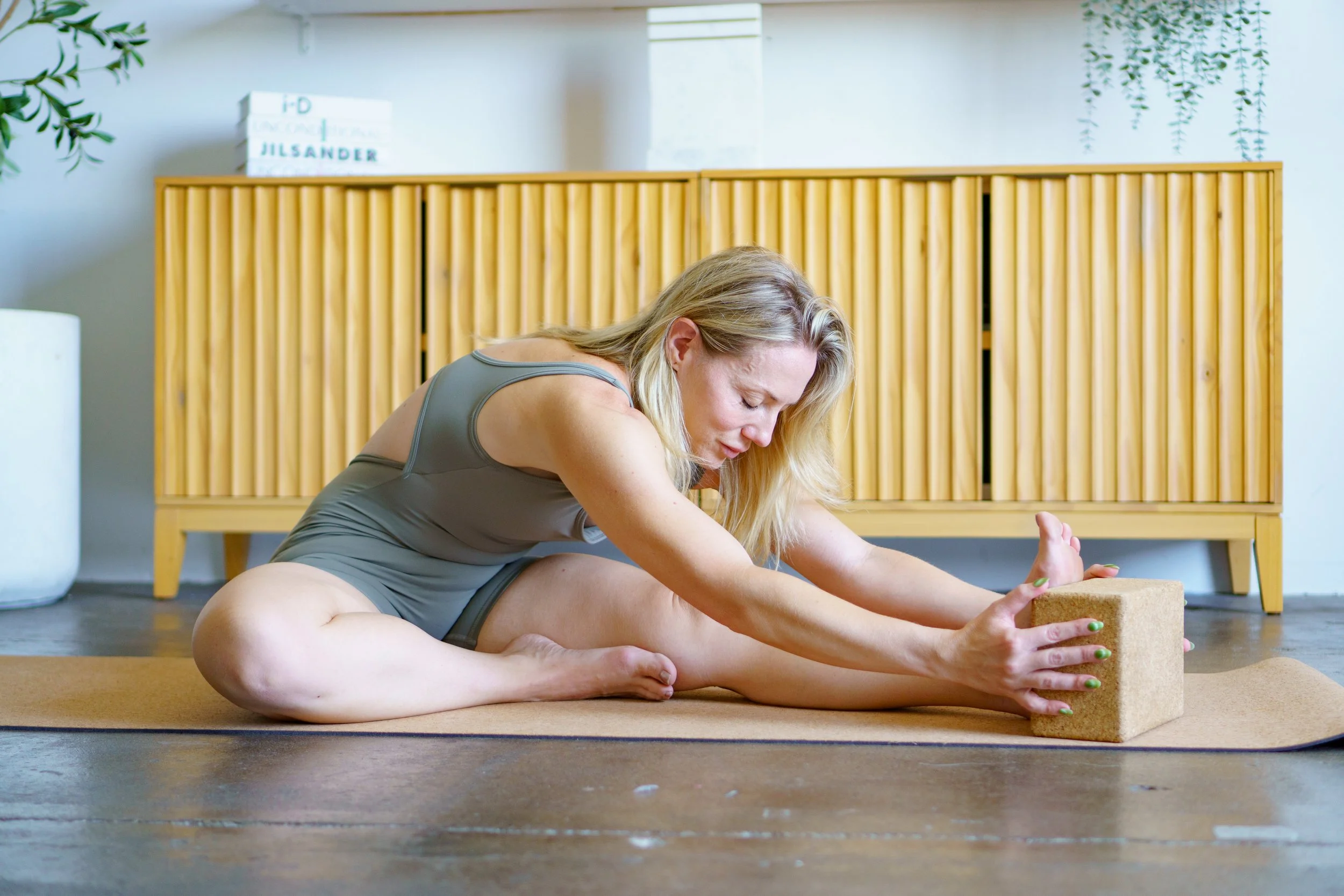The Block Is Your Friend: How a Simple Prop Transforms Your Practice
If there’s one tool that doesn’t get enough credit in yoga and Pilates, it’s the humble block.
Often seen as a “beginner’s prop,” the block is actually one of the most intelligent tools for refining your movement practice — whether you’re working on strength, alignment, or body awareness.
It’s not a shortcut.
It’s a tool for smarter movement.
Refining Joint Placement
The block helps refine your joint placement by literally bringing the floor to you.
When your hand, foot, or pelvis doesn’t have to reach beyond its natural range, you can find neutral alignment instead of collapsing into joints or overstretching connective tissue.
That means your body gets to work from a place of integrity rather than compensation — creating stability, clarity, and balance.
Using a block allows your muscles to engage in the right sequence, helps your nervous system feel supported, and teaches your joints how to align more efficiently over time.
The Block’s Origin: Accessibility and Alignment
Originally, the block was invented as an accessibility tool — a way to help students deepen their practice without sacrificing alignment.
It was meant to bridge the gap between flexibility and strength, allowing practitioners to maintain joint integrity while still exploring depth and expansion.
Think of it as a safety net for your structure.
It helps your joints stabilize, especially in balancing postures or deep spinal extensions, where leverage and control are everything.
When used well, it’s your best friend for injury prevention, a built-in assist that helps you explore depth without creating unwanted tension.
For Teachers: Ardha Chandrasana as an Example
Take Ardha Chandrasana (Half Moon Pose) — a posture where the block can completely change the structural integrity of the shape.
One of the biggest challenges here is maintaining balance while coordinating opposite actions: the bottom leg externally rotates as the top leg finds neutral.
Without the block, most students reach for the floor and lose that alignment. Their pelvis drops forward or twists downward, the spine leaves the coronal plane, and the work shifts into the lower back instead of distributing through the hip and side body.
When we introduce a block, everything changes.
The block lifts the ground, giving students enough space to stack the pelvis over the standing leg. This allows the bottom femur to externally rotate properly so the pelvis can “sit” securely — the innominate bones stacking one over the other instead of collapsing forward.
With the pelvis stacked, the spine can stay in the coronal plane, allowing the top ribs to align over the bottom ribs. This alignment supports the natural spinal extension and lateral opening that defines Half Moon.
Without this support, the hand reaching too far to the floor forces a compensatory rotation or side bend that compresses the low back rather than lengthening it.
In other words — the block doesn’t make the pose easier, it makes it correct.
A Tool for Awareness and Proprioception
We often underestimate how profoundly the block improves body awareness and proprioception (your sense of where your body is in space).
When you add a block to your practice, you increase the feedback loop between your body and your brain. You feel where weight transfers, where tension sneaks in, and how to adjust alignment in real time.
This awareness transforms how you move — not only in practice, but in daily life.
Three Ways to Use the Block
1. To Support
Make postures more accessible and sustainable.
Example: Half Moon → Chapasana — the block lifts the floor to your hand so you can find expansion through the spine and rotation through the hip without collapsing into your joints.
2. To Challenge
Add load or instability to build strength and control.
Example: Warrior III balancing on a block — the smaller base of support forces your stabilizers to wake up, sharpening balance and precision.
3. To Open
Use it as a prop to release and restore.
Example: Heart bench backbend — the block supports your thoracic spine so your heart and shoulders can open without compressing your lower back.
The Takeaway
The block meets you exactly where you are — and guides you safely toward where you’re meant to go.
It supports you when you need steadiness, challenges you when you need strength, and holds you when you need rest.
So next time you step onto your mat, remember:
The block isn’t a crutch. It’s a conversation partner — one that teaches you how to move with more intelligence, integrity, and awareness.
What’s your favorite way to use your block? 👇


